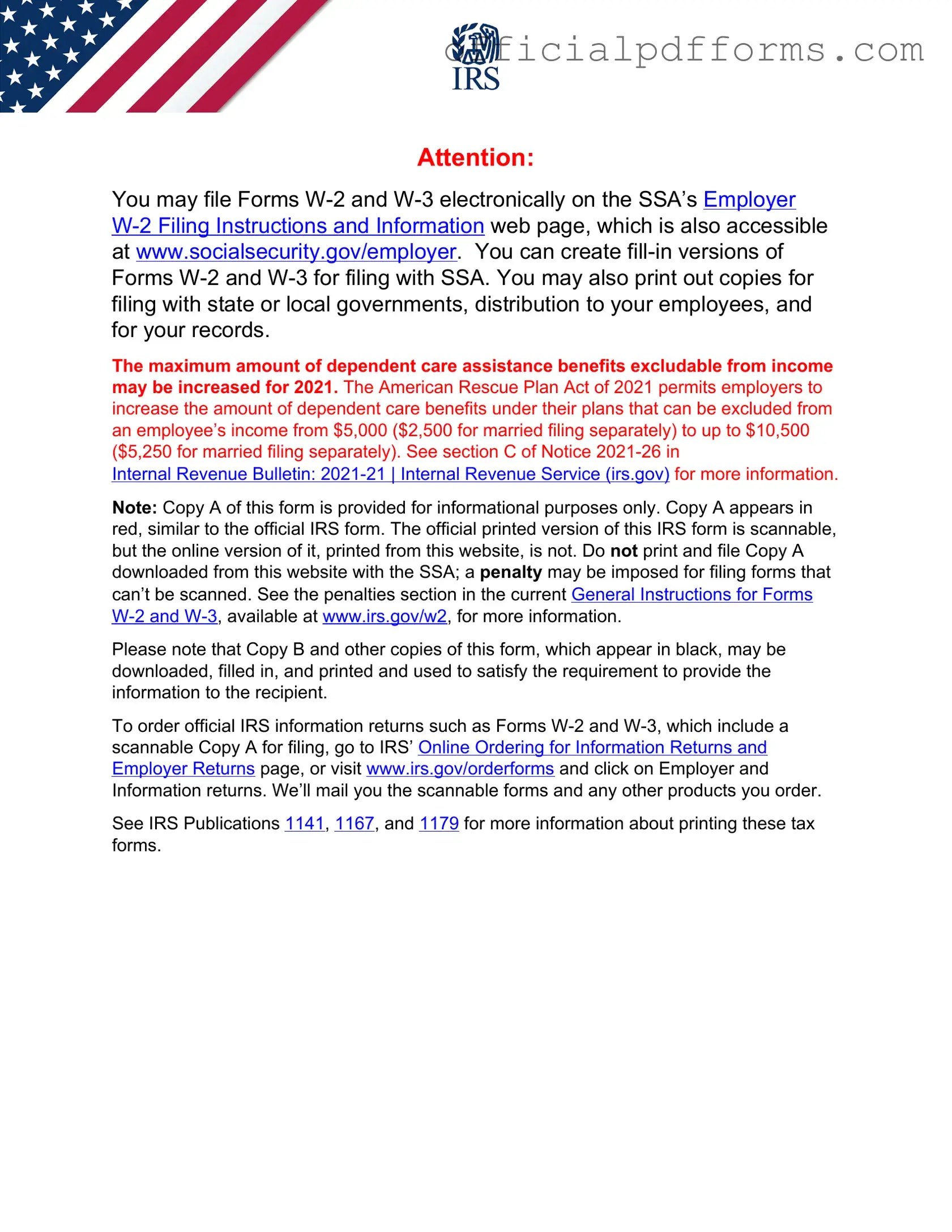The IRS W-2 form is a document that employers are required to provide to their employees each year. It reports an employee's annual wages and the amount of taxes withheld from their paycheck. This form is crucial for employees when filing their income tax returns, as it summarizes their earnings and tax contributions for the year.
Any employee who has earned wages or received other compensation from an employer during the tax year should receive a W-2 form. This includes full-time, part-time, and temporary workers. If you have received any form of payment that requires tax withholding, expect a W-2 from your employer.
Employers are required to send out W-2 forms by January 31 of each year. This deadline ensures that employees have enough time to prepare and file their tax returns by the April 15 deadline. If you have not received your W-2 by mid-February, it is advisable to contact your employer to inquire about its status.
If you notice any errors on your W-2 form, such as incorrect wages or tax withholdings, you should contact your employer immediately. They can issue a corrected form, known as a W-2c. It is essential to resolve these discrepancies before filing your tax return to avoid potential issues with the IRS.
Many employers now offer electronic access to W-2 forms through their payroll or HR platforms. Check with your employer to see if this option is available. If they provide online access, you may be able to download or print your W-2 directly from their website, which can be convenient and faster than waiting for a physical copy.
If you lose your W-2 form, you can request a duplicate from your employer. They are required to keep records of your earnings and should be able to provide you with a new copy. If your employer is unresponsive or no longer in business, you can also check with the IRS for your wage and income information, which may be available through your tax transcripts.
